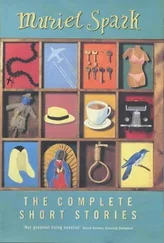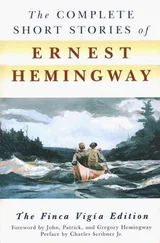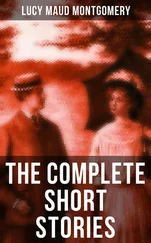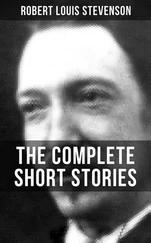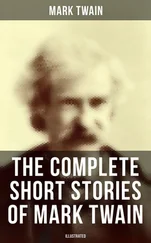The slightly complacent tone in which she said this bewildered Mrs. Stornway.
‘Of course they will always come, dearest Alice,’ she ventured. ‘You are our chief place of pilgrimage.’
But she had taken the wrong tack. Mrs. Marling seemed able to read what was in her mind.
‘Oh, believe me I am quite démodée ,’ she said, more to the needlework than to her friend. ‘And do you know, I like it? I hear of Mrs. Peets giving parties; Mrs. Pepperthwaite has At Homes; you, yourself, are organizing a garden fête, they tell me, and no doubt Mr. Blandfoot will soon be giving a ball. And here I sit, quite happy to be out of it all.’
‘Everyone has missed you so much,’ Mrs. Stornway murmured.
‘How nice of you to say that! I have missed you, dear Eva, more than once: but the others——! No. I am really meant for solitude. Do you like my picture?’ she went on, presenting to her friend’s view a remarkable seascape. In a violet sea a man of war of the Nelson period, all square lines and portholes, had heeled over away from the spectator, and was sinking with all sail set. ‘It’s an emblem of my life, dearest Eva,’ she continued. ‘Do you think it would be considered more of a masterpiece if I left it unfinished? Or better still, I might hide it away and just talk about it, and then I should make quite a name for myself, like your Mr.—Mr.——’
‘Blandfoot,’ put in Mrs. Stornway eagerly.
‘Like him,’ said Mrs. Marling, disdaining to repeat the name. ‘Have you been seeing a lot of him, my dear?’
Mrs. Stornway would only admit to having seen him once or twice. Like most people, she could not tell a disagreeable truth to Mrs. Marling. ‘But to-morrow I and one or two others thought of going in about tea-time to help him hang his pictures. Poor fellow, he is very helpless, like all men, and has no one in the house to lend a hand.’
‘I suppose he invited you,’ Mrs. Marling suddenly remarked.
‘We sort of decided it between us,’ said Mrs. Stornway hastily. ‘And, of course,’ she added, taking a run at it, and adopting the slightly self-conscious air that everyone who talked to Mrs. Marling sooner or later fell into—‘we hope to be shown the picture.’
‘What picture?’ inquired Mrs. Marling.
‘Why, the one everybody is talking about,’ exclaimed Mrs. Stornway. ‘You mentioned it yourself a moment ago.’
‘Oh, that,’ said Mrs. Marling. ‘I don’t think that exists. Oh, no. It’s just an idea that people have got into their heads. But I do pity you, my dear, heaving aloft those large photographic reproductions of the Blandfoot family portraits. I shall think of you, as I sit here listening to poor Mr. Hesketh. He does tire me.’
‘Hesketh!’ exclaimed Mrs. Stornway in awed tones. ‘Not the Hesketh, the novelist? Is he coming to stay with you?’
‘He is already here,’ said Mrs. Marling, ‘only as I wanted the pleasure of talking to you alone I sent him out for a walk. And now,’ she went on briskly, relishing the visible pang of disappointment that crossed her visitor’s face, let us have some tea. But don’t forget to come and tell me what the picture is like, who painted it, and what it is worth.’
The conversation passed into other channels. Mrs. Stornway listened abstractedly, hoping that Mr. Hesketh would appear. But the minutes passed and he did not come.
Punctually at half-past four Mrs. Stornway was shown into the drawing-room of Heather Patch. She was, as she meant to be, the first to arrive; Mrs. Peets and Mrs. Pepperthwaite were still unannounced, and her host himself lingered somewhere in the interior. Yes, there were the pictures, numbers of them, leaning against each other, their strings and wires sticking out untidily, their faces turned to the wall. Mrs. Stornway studied their brown backs with passionate interest. Which of them would be it? A friend had once told her that she was psychic beyond ordinary women. Surely she could use this special power to pierce Mr. Blandfoot’s secret? She stood still, emptied her mind of thought, and tried to let the brown shapes before her pass into it. At first she saw nothing but knowing-looking dogs with heads cocked sideways and pipes in their mouths. Then one picture began to oust the others: its subject remained obscure, but she recognized its material form and, tiptoeing across the room, took hold of the frame and began to draw it slowly backwards.
‘Good afternoon, Mrs. Stornway.’ The voice startled her so much that she let go the picture, which subsided with a thud. She rose awkwardly, her feet imprisoned by the picture-cords.
‘Oh, Mr. Blandfoot, forgive me! I couldn’t resist taking a look!’
‘How charming of you to be so interested,’ he said, coming forward, his large figure blocking up the light and casting a soft gloom before it. ‘Tell me which one you were looking at.’
Mrs. Stornway’s impulse was always to lie.
‘This one,’ she said, indicating one of the smaller pictures.
Mr. Blandfoot pulled it out.
‘Ah, Jake,’ he said, looking at it. ‘Poor old Jake with a bandaged head.’
They went to the window. It was a dog—a dog with his head on one side and tied up in a handkerchief.
‘Why, what’s happened to him?’ she said, looking from Mr. Blandfoot to the picture and back to Mr. Blandfoot again.
He was a tall man, put together so loosely that one or other of his limbs always seemed on the verge of dislocation. His hair, which was thin and pale, the same colour as his face, seemed to cling together, as though for protection, in half a dozen long lank wisps, showing pink tracts between. His face was bony, his features were irregular, and his eyes so light they seemed to have been bleached. He could never give an effect of neatness, thought Mrs. Stornway: even the skin on the hand which held the picture was unevenly tinted, it looked coarse and porous without being firm and hardly seemed to fit him.
‘What’s happened to the dog?’ she repeated.
‘Why,’ he said slowly, ‘dogs will be dogs. I had to teach him——’
But what the lesson was Mr. Blandfoot had sought to inculcate Mrs. Stornway never knew; Mrs. Peets and Mrs. Pepperthwaite arrived simultaneously, and they had tea in the bow-window, flanked by the orange-and-blue curtains. Outside could be seen the patches of heather which gave the house its name. It flowered with a commendable persistence, although in the forefront of villadom’s advance—trenches, incipient walls, overturned wheelbarrows, splodges of whitewash, moist spots for mixing mortar. It looked as dry and wiry and tenacious as the owner of Heather Patch, only more beautiful, thought Mrs. Stornway unwillingly.
The work went on apace, and of the forty-odd pictures only a mere handful remained to be hung. Many of them had been photographs of the Far East, representing, as often as not, severe, thin men in shirtsleeves, standing very erect outside their temporary dwellings, putting, as it seemed, the thought of tiffin behind them. Others showed native women holding their babies, or naked warriors in open formation holding spears. No one ever seemed to sit down. All the pictures suggested a sort of flimsy precarious verticality. For contrast there were views of English interiors, the dreams of nostalgia, where everyone was sitting or lying or reclining. The largest of these, a picture displaying a group of couchant rich people watching their children, dressed in costumes of a bygone age, resting from a game of Ring-a-ring of Roses, Mrs. Stornway hung over the piano. The picture and the instrument were exactly the same length.
‘I believe,’ she murmured, ‘that Mrs. Marling has a copy of this, only not such a fine one, at The Grove. Do you remember it, Mrs. Peets?’
Читать дальше

